The George-Warren Precision Sound Turntable
| Believing In the Magic of Analog By George! |
|
|
|
|
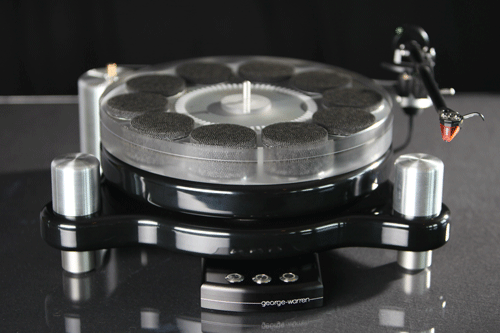
Admittedly, I’ve become enamored over the last year or so with my growing iTunes library and other digitally downloaded “hi-rez” music formats. By being able to use an iPhone to control my Netflix and iTunes accounts, I’ve become a world class “slack-ass” when it comes to home entertainment. I had gotten to a place where I knew the only way that I would ever get into listening to vinyl again would be if I came across a turntable that completely “idiot-proofed” the experience for me. In other words, a turntable would have to be easy to setup, gorgeous enough to enhance the aesthetics of my listening room and be affordable enough that I wouldn’t have to resort to walking into a bank wearing a mask in order to afford it.
Sure, for under a grand I could always buy one of the inexpensive Regas or Music Halls, or Project turntables, but those things are butt-ugly and only give you a glimpse of what a state-of-the-art analog rig can do. If I step up to one of the $5K-plus tables, I can get far better performance, but then I end up saying to myself, “I can’t believe I spent more than $5K for a turntable.” So I had pretty much bagged any thoughts of having an analog rig as part of my reference system… and then I found George. More specifically, I found an ad for the George-Warren Precision Sound turntable on Audiogon. Let’s face it. Discovering obscure, unheralded audio components is probably the best thing about Audiogon. Hopefully, this product won’t go unheralded much longer.
ABOUT GEORGE WARREN WIDMAN
The name, George Warren Precision Sound, comes from the designer’s first and middle name, which is also his father’s first name. His father was a man with an eighth grade education who bought a small hardware store in the early 50’s and built it into a viable business despite having a family with eight children. “My dad’s ability to make and fix things with few tools and limited material was an inspiration to me as I worked on the design of this turntable,” said Widman. I thought it appropriate to include his name in the name of the business.”
In 1991, Widman started his own business making ADA compliant interior signs and custom flat panel fabrication. Later on he purchased a 4 ft. by 8 ft. flatbed CNC router and began designing and manufacturing products made from recycled plastic. He, like many others at the time, thought that CD’s or digital audio was the do-all and end-all for sound reproduction. He felt that it did solve some problems inherent to analog, but he still didn’t feel as involved in the music as when he was listening to vinyl. But about eight years ago he started reading about the resurgence of vinyl, and started fixing old turntables and dusted off his old LP’s. It wasn’t long before he started building his own tables from scratch. He’s been designing and improving on that table ever since. “My existing business had all the necessary tools and facilities to carry on this endeavor,” said Widman. The CAD software, the CNC tooling and the metal and wood working equipment were already here.”
Widman had certain basic ideas about how a turntable should be designed. His criterion for the turntable project were:
• Affordability
• Best possible sound reproduction
• Simple in design and operation
• Beauty and a relatively small footprint
• Durability
“To me analog is more organic in nature than digital, and a turntable should reflect that,” said Widman. It should look less like a space ship and more like a tree.” I wanted the George-Warren turntable to not only be beautiful to listen to, but also beautiful to look at. It should be something that you’ll want on display in your house and not hidden away on an equipment rack in a closet.”
ABOUT THE TURNTABLE
There’s a lot to talk about with the design of this table. Thankfully, there is also a lot of information published on the George-Warren website (www.george-warren.com). I’ll begin with the part that caught my eye first: the stunning, machine cut plinth. The plinth is a two-piece design featuring two 1.375” thick slabs of MDF which are cut on a CNC machine. The slabs are then sanded, primed and painted either a gorgeous high-gloss black (like my review sample) or black cherry. Supporting the lower plinth is an air-dampened spring mechanism which minimizes foot-falls or other long wavelength energy. Three visco-elastic polymer pucks support the top plinth to absorb high frequency resonance. This table is specifically designed to eliminate vibrations from loudspeakers or other external influences. Stunning custom hardwood plinths are also available at an additional cost.
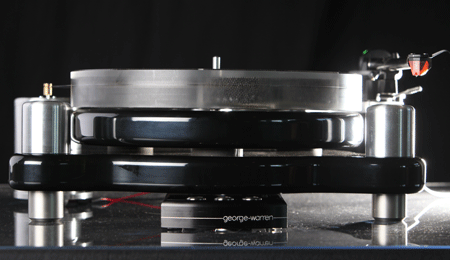
One of the more unique features of the George-Warren table is its high-mass, 1.5” thick acrylic platter. The platter has ten pockets in it, positioned toward its outer edges. Each pocket is filled with precisely the same amount of lead shot and then encapsulated in epoxy. Placing this weight toward the outside of the platter allows for increased momentum, making it easy for the motor and controller to maintain accurate and consistent speed.
The table’s massive spindle bearing has a polished stainless steel shaft inside of a sleeve of ultra-high molecular weight (UHMW) polyethylene. This UHMW material is impregnated with lubricant, meaning that you’ll never have to add any additional lubrication. The shaft sits on a UHMW button upon a precision stainless steel ball bearing. There is no metal-to-metal contact in this design, which contributes to the elimination of audible resonance from the spindle. This table’s operation is as quiet as any I’ve heard.
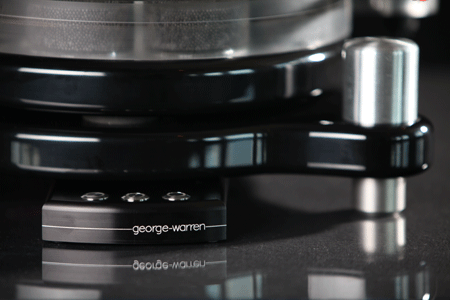
Maxon Motors of Switzerland manufactures the stand alone motor used with the George-Warren turntable. Maxon motors are some of the most precise and reliable DC motors in the world. The drive pulley is machined from brass to very close tolerances and is perfectly round and concentric to the motor shaft. This provides smooth and consistent transfer of energy to the drive belt. High-grade 4-6 lb. fishing line is used to couple the motor to the platter. Fishing line is a preferred belt drive material because it is designed, tested and produced to very high standards. For the George-Warren design, the fishing line is double-looped and provides more than enough traction to efficiently speed up and slow down the weighted platter. The cool thing about using this type of line as a belt is that you can buy replacement line at your local sporting goods store.
The motor controller monitors and controls platter speed with a sensor mounted in the upper plinth. This sensor scans a strobe pattern on the bottom of the platter and constantly updates the controller, helping to maintain pitch perfect speed and stability. This is a three-function controller with two speeds (33.3 and 45 rpm) and a special “clean” function. When pressed, the clean button bypasses the circuitry that controls the platter speed and increases the motor’s torque so that you can use your brush or whatever else you use to clean your records without fear of damaging motor function. When you’re finished cleaning your record, just press the button for whatever speed you want the platter to resume spinning at. This is a very nice touch, indeed.
ABOUT THE TONEARM
George-Warren turntables come with a Moth Arm2 Incognito-wired tone arm. This arm uses the latest three-point mounting method found on the Rega RB700 tonearm. Incognito wiring uses a continuous cable run from the cartridge tags to the phono plug. This assembly features a gold plated aluminum slug, situated at the base of the arm’s pillar, to which all the tonearm components are grounded. Included with the tonearm are George-Warren’s exclusive VTA adjustment clips, which raise the arm without having to disconnect the arm from the arm board. Simply loosen the screws and slide in the spacing clips. Another very thoughtful design touch.
ABOUT SETUP
When I said that having an analog rig as part of my reference system would have to be an idiot-proofed experience for me, that included system setup too. In that regard, the George-Warren turntable is an absolute success. The table comes with a set of step-by-step instructions that even I could easily navigate, and I’ve got all the technical acumen of a butternut squash. All I needed was some basic setup tools like my Shure SFG-2 stylus force gauge and Mobile Fidelity Geo Disc cartridge alignment tool. The total setup process took less than 30 minutes.
This is easily one of the most thoughtfully designed tables I’ve seen. It is loaded with neat design touches that make it highly efficient, highly functional, yet still very easy to operate.
ABOUT THE MUSIC
You’ve probably already guessed by now that I loved the looks and design of the George-Warren turntable. But none of that would mean a hill of beans if I wasn’t equally impressed with the way it renders music. Well let me get straight to the point. This table sent me running to the record stores. Thankfully in Chicago, there are still many specialty music stores that still carry a wide selection of vinyl. Reckless Records, located in the heart of Chicago’s “Loop” business district, has become my regular lunchtime hangout since this table arrived. I couldn’t have been in the store for more than five minutes before I had about a half dozen albums tucked under my arm. On my first visit there I picked up re-issues of two of my all-time favorite albums: Parliament’s legendary funk album Mothership Connection[Casablanca] and Stevie Wonder’s Songs In the Key of Life[Motown].
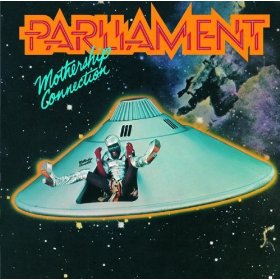 Mothership Connection was the album that started the whole mid-70’s funk revolution, thanks to some world-class musicians like bassist William “Bootsy” Collins, keyboardist Bernie Worell and Eddie Hazel, the man responsible for arguably the best solo guitar performance of the 20th Century, “Maggot Brain.” When I placed the needle on the first track, “P-Funk (Wants to Get Funked Up)” and Ray Davis’ smooth baritone voice poured out of the 12” woofers of my Escalante Design Fremonts, it was over. I sat down in the sweet spot and didn’t move (except for the bobbing of my head to the rhythm of the music, that is). Every song on this album is great but the one that really got my attention was track 6, “Give Up the Funk (Tear the Roof Off the Sucker).” Of all the brilliant musicians I’ve listened to on this album over the years (on vinyl and CD), it wasn’t until I heard it coming from the George Warren table that I gained an appreciation for the drum work by Ramon “Tiki” Fullwood. From the opening drum lead-in, he completely dominates this song. This table fleshes out all of the life and detail of this song; every snap of the snares, crash of the cymbals, and thump of the foot pedal. It simply must be experienced.
Mothership Connection was the album that started the whole mid-70’s funk revolution, thanks to some world-class musicians like bassist William “Bootsy” Collins, keyboardist Bernie Worell and Eddie Hazel, the man responsible for arguably the best solo guitar performance of the 20th Century, “Maggot Brain.” When I placed the needle on the first track, “P-Funk (Wants to Get Funked Up)” and Ray Davis’ smooth baritone voice poured out of the 12” woofers of my Escalante Design Fremonts, it was over. I sat down in the sweet spot and didn’t move (except for the bobbing of my head to the rhythm of the music, that is). Every song on this album is great but the one that really got my attention was track 6, “Give Up the Funk (Tear the Roof Off the Sucker).” Of all the brilliant musicians I’ve listened to on this album over the years (on vinyl and CD), it wasn’t until I heard it coming from the George Warren table that I gained an appreciation for the drum work by Ramon “Tiki” Fullwood. From the opening drum lead-in, he completely dominates this song. This table fleshes out all of the life and detail of this song; every snap of the snares, crash of the cymbals, and thump of the foot pedal. It simply must be experienced.
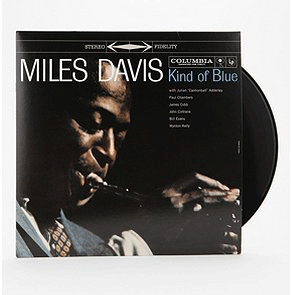 I also picked up a 2010 re-issue of Miles Davis’Kind of Blue[Columbia/Legacy]. Now I’ve heard this album in many other forms over the years, early vinyl pressings, redbook CD, and even SACD. But listening to this album on the George-Warren turntable brought me back to one of my long held beliefs: a well done analog front end and high-quality vinyl recording still sounds better than digital, from a pure music standpoint. The first track, “So What,” was an eye opener. Miles’ trumpet comes through with a character that is hard to describe. The notes he plays just sound fuller and more breathy coming from this table. I guess another word you could use is natural. Treble excellence has always been a hallmark of good analog playback, and it is more than evident on the second track, “Freddie Freeloader.” Wynton Kelly’s piano solo is a joy to listen to. The sound of the hammers hitting the strings of his piano is quick and detailed. The bass line of this song is well defined and very easy to follow and enjoy, as was this whole album. Listening to this classic recording was made more of an experience with the George-Warren table.
I also picked up a 2010 re-issue of Miles Davis’Kind of Blue[Columbia/Legacy]. Now I’ve heard this album in many other forms over the years, early vinyl pressings, redbook CD, and even SACD. But listening to this album on the George-Warren turntable brought me back to one of my long held beliefs: a well done analog front end and high-quality vinyl recording still sounds better than digital, from a pure music standpoint. The first track, “So What,” was an eye opener. Miles’ trumpet comes through with a character that is hard to describe. The notes he plays just sound fuller and more breathy coming from this table. I guess another word you could use is natural. Treble excellence has always been a hallmark of good analog playback, and it is more than evident on the second track, “Freddie Freeloader.” Wynton Kelly’s piano solo is a joy to listen to. The sound of the hammers hitting the strings of his piano is quick and detailed. The bass line of this song is well defined and very easy to follow and enjoy, as was this whole album. Listening to this classic recording was made more of an experience with the George-Warren table.
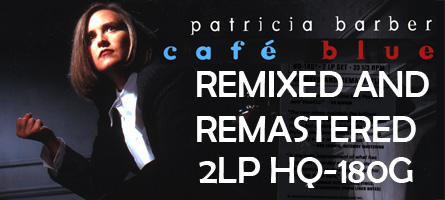
A real delight for me came when I put on the Mobile Fidelity Sound Lab 45RPM pressing of Patricia Barber’s Café Blue [MFSL 3-45002]. Detail, dynamics, imaging, soundstaging. It’s there in all its glory. This is another of those recordings that tends to be omnipresent at the various hi-fi shows. But this particular pressing is truly exceptional. This table’s ability to maintain pitch stability when switching from 33.3 to 45RPM is remarkable. And for this double album, that is a very important performance aspect. Musically, Barber’s smoldering vocals on “The Thrill is Gone,” also come through with passion and heart. The level of resolution provided by this table seems to put her voice in your room. Heck, when I turned the lights out to enjoy this album during one late night listening session, it was downright eerie. And for sheer dynamics, you gotta hear “Nardis.” The piano and drum performance on this song are exciting. The piano keys get pounded almost as hard as the drum kit does and some of the pops of the snare drums border on violence. But not only do you get all of the impact but the decay of those thwacks and cymbal crashes add to the realism of this performance.
Conclusion
The George-Warren Precision Sound turntable has been my vinyl collection’s salvation. I honestly didn’t think that an analog rig would be part of my reference system going forward because of all the fun that I’ve been having with downloads and streaming audio files. But this table has reminded me of why I got into high-end audio in the first place; the ability to accurately reproduce live musical performances in my home. I can’t praise this company enough for putting so much practical thought into designing a “real world” turntable that is as lovely to look at as it is to listen to. I hope to make it a permanent part of my reference system and heartily recommend it to anyone who still believes in the magic of analog. A strong recommendation.

![]()
Specifications
Motor: DC
Power Supply: 18 v
Base: Split Plinth
Suspension: 2 stage, air dampened lower plinth, sorbothane support pucks on upper plinth.
Armboard: Acrylic
Weight: 40 lbs.
Warranty: 5 years
Price: $3,995.00 (black or cherry), $4,395.00 (walnut or padauk)
Address:
George Warren Precision Sound
5400 North 7th Avenue
Sioux Falls, SD 57104
Phone 877-513-0083
Email – george@advance-sign.com
Website www.george-warren.com
![]()
Don’t forget to bookmark us! (CTRL-SHFT-D)
Stereo Times Masthead
Publisher/Founder
Clement Perry
Editor
Dave Thomas
Senior Editors
Frank Alles, Mike Girardi, Key Kim, Russell Lichter, Terry London, Moreno Mitchell, Paul Szabady, Bill Wells, Mike Wright, Stephen Yan, and Rob Dockery
Current Contributors
David Abramson, Tim Barrall, Dave Allison, Ron Cook, Lewis Dardick, Dan Secula, Don Shaulis, Greg Simmons, Eric Teh, Greg Voth, Richard Willie, Ed Van Winkle, and Rob Dockery
Music Reviewers:
Carlos Sanchez, John Jonczyk, John Sprung and Russell Lichter
Site Management Clement Perry
Ad Designer: Martin Perry





Be the first to comment on: The George-Warren Precision Sound Turntable